Picking the right Spanish learning app can be tricky. Babbel and Duolingo are two top choices, each with its style. Babbel focuses on real-world talks, while Duolingo makes learning feel like a game. Your goals and how you like to learn will point you to the best fit. This post compares these apps, looking at how they teach, what they offer, their costs, and how easy they are to use. After reading, you’ll know which one matches your Spanish learning needs better.
Babbel and Duolingo
Brief Overview of Babbel
Babbel launched in 2008 as the world’s first language-learning app. It focuses on practical conversation skills and real-life scenarios. Babbel’s Spanish course aims to get you speaking confidently in everyday situations.
Quick Look at Duolingo
Duolingo burst onto the scene in 2011 with its free, game-like approach to language learning. It’s known for its cute owl mascot and bite-sized lessons. Duolingo’s Spanish course covers a wide range of vocabulary through playful exercises.
Learning Approach and Method
Babbel’s Structured Lessons
Babbel takes a more traditional approach to language learning. Its lessons build on each other, introducing new concepts gradually. You’ll find:
- 10-15 minute lessons
- Focus on practical phrases
- Grammar explanations integrated into exercises
- Review sessions to reinforce learning
Duolingo’s Gamified Learning
Duolingo turns language learning into a game. Its colorful interface and rewards system keep users engaged. Features include:
- Short, 5-10 minute lessons
- Points and streaks to motivate daily practice
- A variety of exercise types
- Immediate feedback on answers
Spanish Course Content
Babbel’s Spanish Offerings
Babbel’s Spanish course is comprehensive, covering:
- Beginner to intermediate levels
- Latin American and European Spanish options
- Business Spanish modules
- Cultural insights integrated into lessons
Duolingo’s Spanish Curriculum
Duolingo’s Spanish tree includes:
- Extensive vocabulary across various themes
- Basic to advanced grammar concepts
- Stories feature for reading practice
- Podcasts for listening comprehension (separate from the main app)
Pricing and Plans
Babbel’s Subscription Options
Babbel operates on a subscription model:
- 3-month plan: $15.25 per month
- 6-month plan: $8.45 per month
- 12-month plan: $6.45 per month
- Lifetime access: a one-time fee of $299.5
Duolingo’s Free and Premium Models
Duolingo offers two tiers:
- Free version: Access to all lessons with ads
- Super Duolingo: $47.99 per year or $7.99 per month
- Ad-free experience
- Unlimited hearts (attempts)
- Offline access
- Progress quizzes
User Interface and Experience
Navigating Babbel’s Platform
Babbel’s interface is clean and straightforward:
- Clear lesson progression
- Easy-to-use dashboard
- Available on web and mobile devices
Exploring Duolingo’s App
Duolingo’s design is colorful and engaging:
- Intuitive skill tree layout
- Achievements and leaderboards
- Primarily mobile-focused, with web access
Grammar and Vocabulary Focus
Babbel’s Grammar Instruction
Babbel integrates grammar naturally:
- Explanations in context
- Practice through real-life examples
- Focus on sentence structure and verb conjugations
Duolingo’s Vocabulary Building
Duolingo emphasizes vocabulary acquisition:
- Extensive word lists across various topics
- Spaced repetition for better retention
- Less explicit grammar instruction
Speaking and Listening Practice
Babbel’s Conversational Approach
Babbel prioritizes speaking skills:
- Speech recognition technology
- Dialogue practice with native speakers
- Pronunciation tips and exercises
Duolingo’s Audio Exercises
Duolingo includes speaking and listening, but to a lesser extent:
- Basic speech recognition
- Listening exercises with multiple-choice answers
- Limited conversation practice
Progress Tracking and Motivation
Babbel’s Review System
Babbel helps you track your learning:
- Personalized review sessions
- Progress tests after each lesson
- A clear indication of completed modules
Duolingo’s Streak and Rewards
Duolingo gamifies progress:
- Daily streaks to encourage consistency
- XP points and level-ups
- Leaderboards for friendly competition
Additional Features and Resources
Babbel’s Extras
Babbel offers supplementary content:
- Babbel Magazine with language and culture articles
- Podcast for Spanish learners (separate subscription)
- Live classes with tutors (additional cost)
Duolingo’s Supplementary Tools
Duolingo provides extra learning opportunities:
- Stories feature for reading comprehension
- Events and forums for community interaction
- Duolingo podcast (separate from the main app)
User Reviews and Feedback
What Babbel Users Say
Babbel users often praise:
- Practical, conversation-focused lessons
- Clear grammar explanations
- Professional content and interface
Some users mention:
- Limited free content
- Lack of speaking practice with real people
Duolingo User Experiences
Duolingo users appreciate:
- Fun, addictive learning experience
- Completely free option
- Variety of exercises and topics
Common criticisms include:
- Sometimes unnatural or odd sentences
- A less structured approach to grammar
- Limited advanced content
Pros and Cons
Babbel’s Strengths and Weaknesses
Pros:
- Structured curriculum
- Focus on practical conversation
- Clear grammar explanations
- Cultural insights
Cons:
- Subscription required for full access
- Limited gamification elements
- Fewer languages are offered than Duolingo
Duolingo’s Advantages and Drawbacks
Pros:
- Free access to all lessons
- Engaging, game-like interface
- Wide variety of languages
- Strong community features
Cons:
- There is less focus on practical conversation
- Limited grammar instruction
- Ads in the free version can be distracting
Which App Suits Different Learner Types?
Best for Beginners
For complete beginners:
- Duolingo offers a gentle, fun introduction to Spanish
- Babbel provides a more structured start with practical phrases
Ideal for Intermediate Learners
As you progress:
- Babbel’s advanced lessons offer deeper language understanding
- Duolingo’s later stages can help expand vocabulary
Combining Babbel and Duolingo
Benefits of Using Both Apps
Many learners find value in using both apps:
- Duolingo for daily vocabulary practice
- Babbel for structured lessons and grammar
Creating a Balanced Learning Plan
To get the most out of both apps:
- Start with Duolingo to build basic vocabulary
- Introduce Babbel for grammar and conversation practice
- Use Duolingo for quick practice sessions
- Rely on Babbel for in-depth learning
Alternatives to Babbel and Duolingo
Other Spanish Learning Apps
Consider these alternatives:
- Rosetta Stone: Immersive learning approach
- Busuu: Combines lessons with native-speaker interactions
- Memrise: Focus on memorization techniques
Traditional Learning Methods
Don’t forget about traditional resources:
- Textbooks for structured learning
- Language exchange partners for real conversation
- Spanish media (movies, music, podcasts) for immersion
Final Verdict: Babbel vs Duolingo for Spanish
Choosing between Babbel and Duolingo depends on your goals:
- Choose Babbel if you want a structured approach focused on practical conversation and are willing to pay for quality content.
- Go with Duolingo if you prefer a free, game-like experience that makes learning fun and helps build vocabulary quickly.
Both apps have their strengths, and many learners benefit from using them together.
Conclusion
In the Babbel vs Duolingo for Spanish showdown, there’s no clear winner. Each app offers unique benefits for language learners. Babbel shines with its structured lessons and conversation focus, while Duolingo makes learning fun and accessible.
Try both Babbel and Duolingo to see which fits your learning style. For the best results, combine them with other resources like podcasts, movies, and real-life practice.
Whichever app you choose, stay motivated and practice regularly. With dedication and the right tools, you’ll be speaking Spanish confidently in no time. ¡Buena suerte!
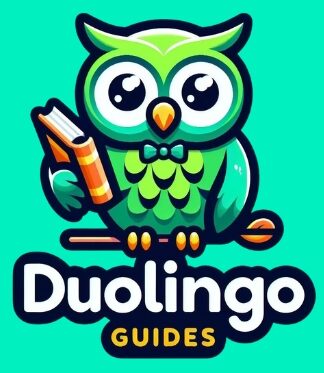

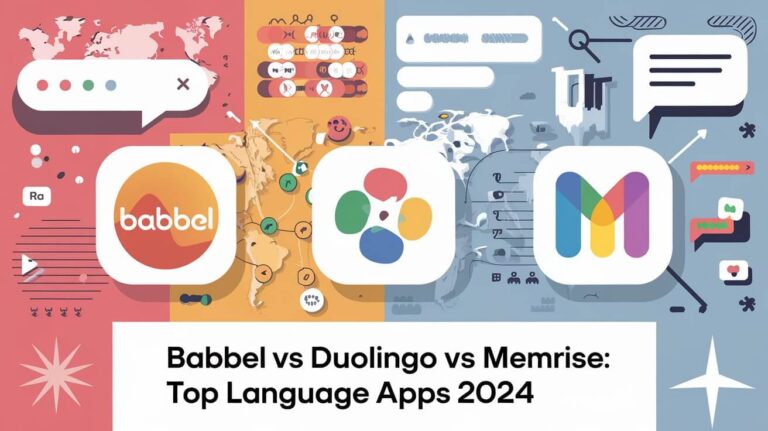
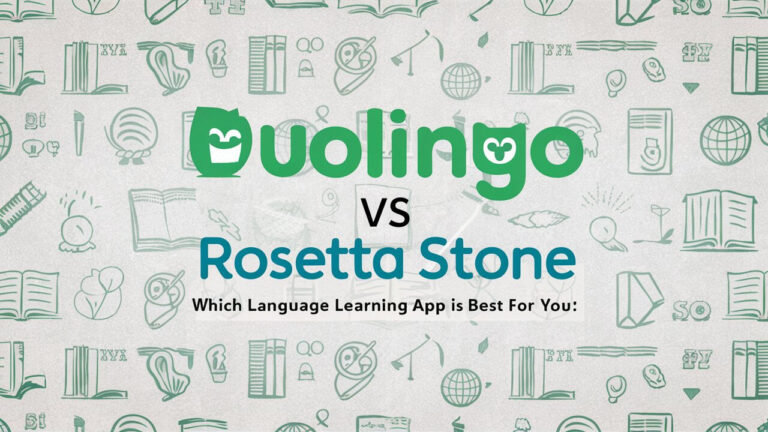
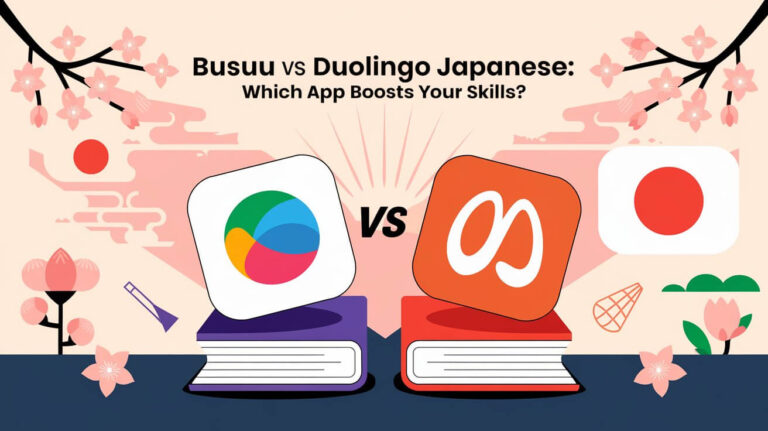

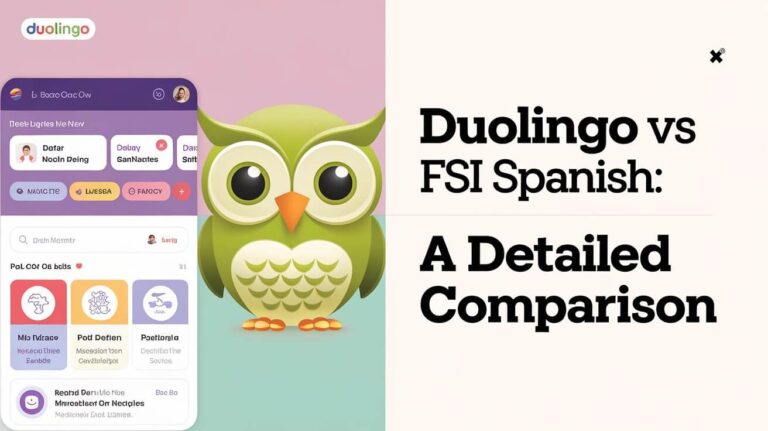

As a native Spanish speaker trying to help my American husband learn, we’ve tried both. This article is spot on! He enjoys Duolingo but I notice he learns more practical phrases from Babbel. The weird sentences in Duolingo make us laugh tho. “The penguin drinks milk” isn’t exactly everyday conversation haha
Does anyone know if the Babbel lifetime access ever goes on sale? $299 seems steep but might be worth it if I can use it for years. Also wondering if their speaking recognition is actually good because Duolingo barely understands me half the time!
im currently using both apps!! duolingo for daily practice (love the streaks motivation) and babbel when i have more time to focus. this article confirmed im on the right track lol. one thing though – the article doesnt mention that duolingo has the characters and stories which make it so fun!
You’re absolutely right, Jasmine! The character storylines add a fun dimension to Duolingo that I should have emphasized more. Your approach of combining both apps sounds perfect – getting the gamification benefits of Duolingo with Babbel’s structured learning. Thanks for pointing this out!
This was exactly the comparison I needed! I’m planning a trip to Mexico next year and want to learn enough Spanish to get by. Is Babbel’s Latin American Spanish option better for me than Duolingo if I’m specifically going to Mexico? The subscription cost makes me hesitate though…
Hi Sarah! For your Mexico trip, Babbel’s Latin American Spanish option would indeed be more targeted than Duolingo. They focus on practical travel phrases that could be really useful for your situation. If cost is a concern, you might try their 3-month subscription just before your trip for more focused practice. Safe travels!
Great comparison! I’ve been using Duolingo for about 8 months and hit a plateau recently. The article convinced me to try Babbel for more advanced conversation practice. Anyone else feel like Duolingo gets repetitive after a while?
Thanks for your comment, Miguel! Many learners do experience that plateau with Duolingo. Babbel’s conversation-focused approach might be just what you need to break through to the next level. Let me know how it goes if you try it!